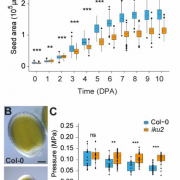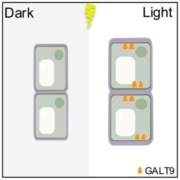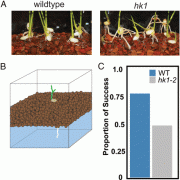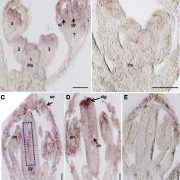Review: Not only turgor can shape plant growth!
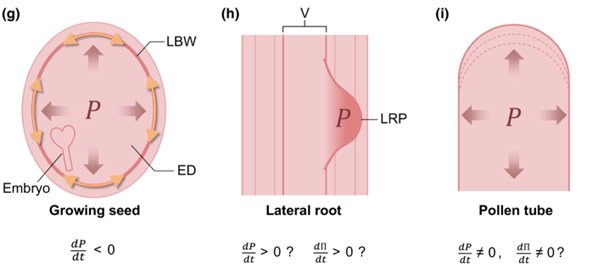 Cell wall tensile stress and turgor pressure are two important determinants of cell growth. Turgor pressure has been regarded as a passive contributor, however recent evidence reviewed by Ali et al. suggests that turgor is an emergent property that determines growth. Wall stress and turgor pressure are inter-reliant and a defect in one component can impact the other. Furthermore, the size and shape of cells can affect turgor, wall stress, and growth. Non-spherical shapes such as leaf puzzle-shaped cells can decrease wall stress, while smaller cells have less turgor. The authors explore the relationship between turgor and wall strength in several tissues. In seeds, the pressure exerted by endosperm triggers growth during initial stages, while towards the end of the grain filling period growth is arrested by cell wall thickening of the seed coat. The emergence of lateral roots penetrating different cell layers is facilitated by auxin dependent repression of aquaporins, resulting in a rapid buildup of turgor. In pollen tubes, growth is turgor dependent, even though growth rate and oscillatory growth are not entirely turgor dependent. The multipronged role of compatible solutes in plant metabolism and structural integrity enables the integration of metabolic, mechanical and hydraulic signals by turgor. Translating uniform turgor/wall pressure into growth signals requires directionality cues and signaling intermediates including receptor kinases and mechanosensitive channels. (Summary by Lekshmy Sathee @lekshmysnair) New Phytol. 10.1111/nph.18683
Cell wall tensile stress and turgor pressure are two important determinants of cell growth. Turgor pressure has been regarded as a passive contributor, however recent evidence reviewed by Ali et al. suggests that turgor is an emergent property that determines growth. Wall stress and turgor pressure are inter-reliant and a defect in one component can impact the other. Furthermore, the size and shape of cells can affect turgor, wall stress, and growth. Non-spherical shapes such as leaf puzzle-shaped cells can decrease wall stress, while smaller cells have less turgor. The authors explore the relationship between turgor and wall strength in several tissues. In seeds, the pressure exerted by endosperm triggers growth during initial stages, while towards the end of the grain filling period growth is arrested by cell wall thickening of the seed coat. The emergence of lateral roots penetrating different cell layers is facilitated by auxin dependent repression of aquaporins, resulting in a rapid buildup of turgor. In pollen tubes, growth is turgor dependent, even though growth rate and oscillatory growth are not entirely turgor dependent. The multipronged role of compatible solutes in plant metabolism and structural integrity enables the integration of metabolic, mechanical and hydraulic signals by turgor. Translating uniform turgor/wall pressure into growth signals requires directionality cues and signaling intermediates including receptor kinases and mechanosensitive channels. (Summary by Lekshmy Sathee @lekshmysnair) New Phytol. 10.1111/nph.18683


